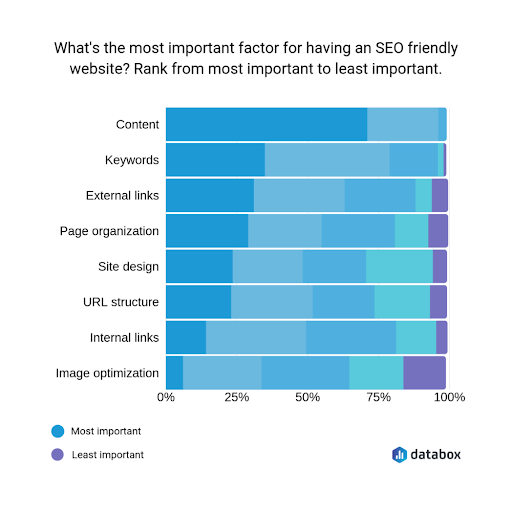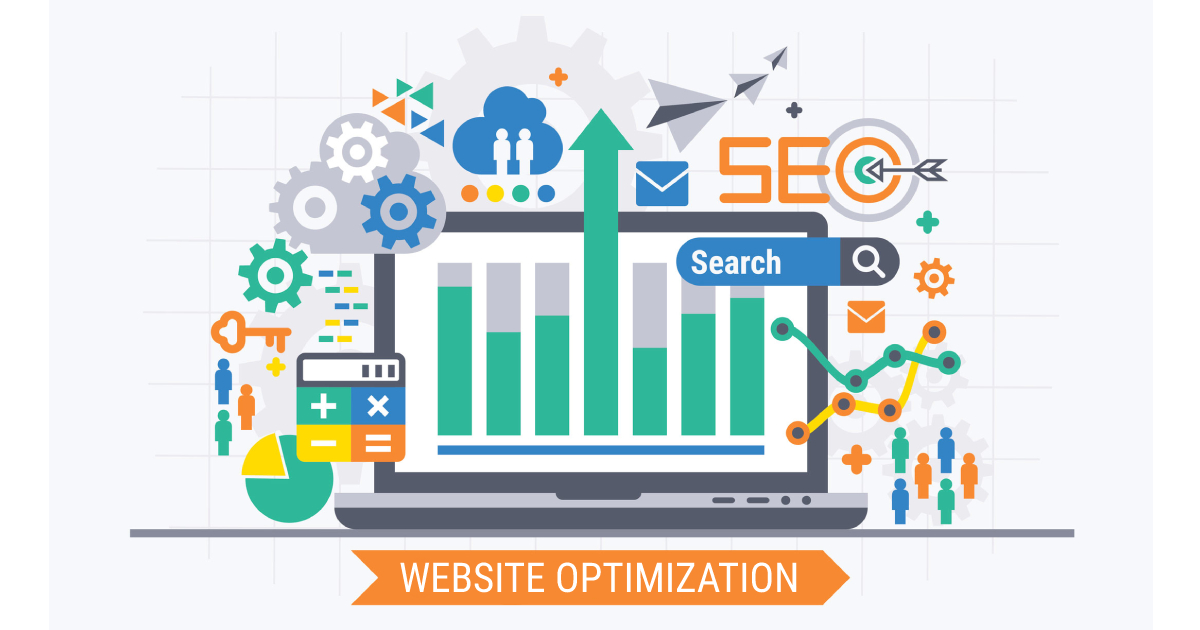10 Essential Website Optimization Strategies to Convert Prospectus
Websites remain the most effective source for brand awareness, and hence their website optimization is necessary. With changing user demands, optimization and ranking strategies are also evolving. What remains the same is a few parameters that play a crucial role in ranking websites. So there’s no need to work on all the parameters but prioritize the ones which play an essential role in ranking our website.
Contents
This shows that optimizing your website is a crucial task. Before we explain optimization strategies, here is a quick introduction to website optimization.
What Does Website Optimization Mean?
A process that involves amending the website in such a way that it increases search engine traffic and improves user experience. Website Optimization often involves changing the HTML script, working on graphics or other components to get better rankings on search engines.
Optimizing your website is never a one-time thing and hence needs to be worked on constantly. It is necessary to attract more organic traffic, which ultimately helps convert more visitors into leads. Optimizing also helps reduce the advertising cost and enhance user interaction.
You can consider these top leading digital marketing companies to improve and increase your rank on search engines, along with the web design companies to optimize your website. In addition to this, you must be aware of possible strategies for optimizing your website.
Top 10 Website Optimization Strategies to Use

Source: Databox
An easy & precise guide that answers all your queries regarding website optimization. Follow these listed strategies to improve your search rankings on search engines.
The Layout Of your Website:
Data divided under multiple headings helps search engines dig into all your content and display relevant results when asked for. Also, a structured webpage is always user-friendly, as it provides easy access and makes it easily navigable.
No matter how informative the content is, it will fail to reach the target audience if it lacks proper format. Here are a few things to be kept in mind while designing the Schema for your website:
- Evaluate categories by combining or separating them accordingly.
- Link the relevant content from within or interrelated websites.
- In the subheading section of your script, add meta titles.
- Following Schema can be used for basic website design home, product or services provided, reviews, FAQs, and about us.
Mobility of Website:
Although Google rolled out the mobile-first Index, optimizing websites for mobile, tablets, or desktop increases traffic. So the key is to ensure that data is adaptive to smaller screens too. Here’s how it can be done:
- Keep the loading speed under 2.5 seconds and request processing time under 100ms.
- Scaling images for different devices, so the quality of the image is not distorted.
- Prevent the content from nosy pop-ups as it blocks the original content.
- Try optimizing your website for voice search as a higher number of consumers prefer voice search over text search.
- Make the website responsive to wrong actions and hence provide solutions for the same.
- I prefer short headings.
- Use Minimal and relevant content only.
- Make sure the content is informative, authoritative, and easily navigable.
Answer Users Question
Search engines use keywords to rank and display content on the search result page. It’s necessary to ensure the content is relatable and understands the user’s intent. User intent can be informational, navigational, commercial, and transactional. This makes determining and displaying the intended content important. Follow these key points while you post content on your website:
- Post only authoritative content target the keywords
- Don’t forget the searcher’s intent.
- Choose quality content over quantity content.
- While updating or writing new content, align it to the user goals and existing ranking content.
Building a Personal Brand
Google and every other search engine promote authoritative and quality content with a better user experience. Stronger backlinks, high-quality graphics, and highly readable content help users to stay on the web page for a longer time. Here are a few tips for branding and building your website:
- Align content with your niche.
- Networking with people of your industry to build a strong market value.
- Build a responsive website and work on the feedback received.
- Ensure your brand is aligned with your audience.
This helps you become an authoritative and informative content provider, making your website a reliable source and a market leader.
Embed Technical SEO Errors:
Many variables define the SEO ranking, which increases the possibility of errors in some of the other tech variables, which is not a big deal. These errors can be determined and worked upon by using SEO tools.
There are numerous tools available such as Semrush, Google Search Console, etc., which makes auditing errors a simple task. Here’s all you can find out about Technical SEO errors:
- Fix the status code errors.
- Look for duplicate tags and remove them.
- Using the Google search console, check and fix the indexing through the mobile-first index.
- Fix the robots.txt location, as it can ruin your organic traffic.
- Make sure your URL is not canonical as it leads to duplication of information which can further create confusion.
- Fix the broken links as they provide a bad user experience. This also can be done by using the Google search console.
All these fixes help you reach the potential ranking under the search engines.
Use descriptive tags for Graphics:
Describing images and videos helps search engines to list the relevant content. These tags help in describing the image or videos. Make sure you list an alternative text description for people using text-only browsers. Here’s how alt tags work:
- Helps search engines in listing and ranking the content.
- Acts as an add-on for screen readers.
- Fixes the broken webpage problems temporarily.
- It helps users who are visually impaired or are unable to identify images.
Alt tags are important for SEO purposes and help in defining purpose and improving accessibility.
Marketing Content:
According to estimates, 2.5 quintillion bytes of data are produced every day. This number is not only difficult to pronounce but also to depict. In this era of exponential data growth, it is important to provide unique and useful information.
Make the best use of your popular or most trafficked and low trafficked content by replicating the strategy which works best and brings better results. Here are a few tips to make your content out of the box:
- Update content in the context of the trending topics.
- Add images to simplify and make attractive content.
- Check website traffic and create the strategy accordingly.
- Promote content on your social media channels.
- Write articles describing your product or service and link them.
- Share reviews on the current hyped products.
- Keep navigating between informative and entertaining content to hold the audience.
This can also be done by reaching out to a Digital marketing company or a trusted web design agency that can provide a comprehensive approach for your forte.
Building Descriptive Links:
Adding relevant links adds to the authoritativeness of websites. Link building is one of the considerable factors for ranking websites. Descriptive links are a crucial top-ranking parameter for Google. Descriptive links help in both optimizing and also adding value to the content.
Here are certain important points to be considered while building links:
- Make sure the links are not broken. Update the related links regularly.
- Check the credibility and authority of links as they are associated with your brand’s credibility.
- Instead of using “click here” and directly adding the webpage link
- Make sure your website has no spam links.
Updating Old Content:
With the exponential growth of data, content becomes less relevant and ranked. Also, creating new data every day is a difficult task and requires time, energy, and resources.
To keep your content more desirable for search engines and users, make sure you keep it fresh and up to date. Adding relevance to the current trending topic can help in increasing ranks. Below mentioned steps can be used to renew the existing content:
- Fix any typing errors.
- Try and make the content more readable.
- Check for broken links and update them.
- Add some rich keywords by using the keyword tool
- Add some new graphics
- Try updating the date of the article.
Updating content improves the quality and readability of content.
Enhanced User Experience:
Working with different users helps determine insights into their demands and limitations. A better user experience keeps the user for a longer period and increases the CTA.
Keep a note of the following while you provide the content:
- Credible enough to develop users’ trust.
- Valuable to both users in terms of value and for the company in terms of Return on investment.
- Useful to satisfy user needs
- Accessible to everybody.
- Usable and easy to navigate
These factors add so much value to health and improve the rank of content.
Website Optimization Strategies to Improve User Experience
With the given article, one thing is sure that website optimization is not a one-time process, and it requires continuous work and improvement. Overall, if the website provides intent and a healthy user experience, it helps generate more leads and revenue.
However, you can follow the above-listed steps to kickstart your strategy and increase your ranking on different search engines. These strategies, when followed, not only increase traffic but also increase revenue.
